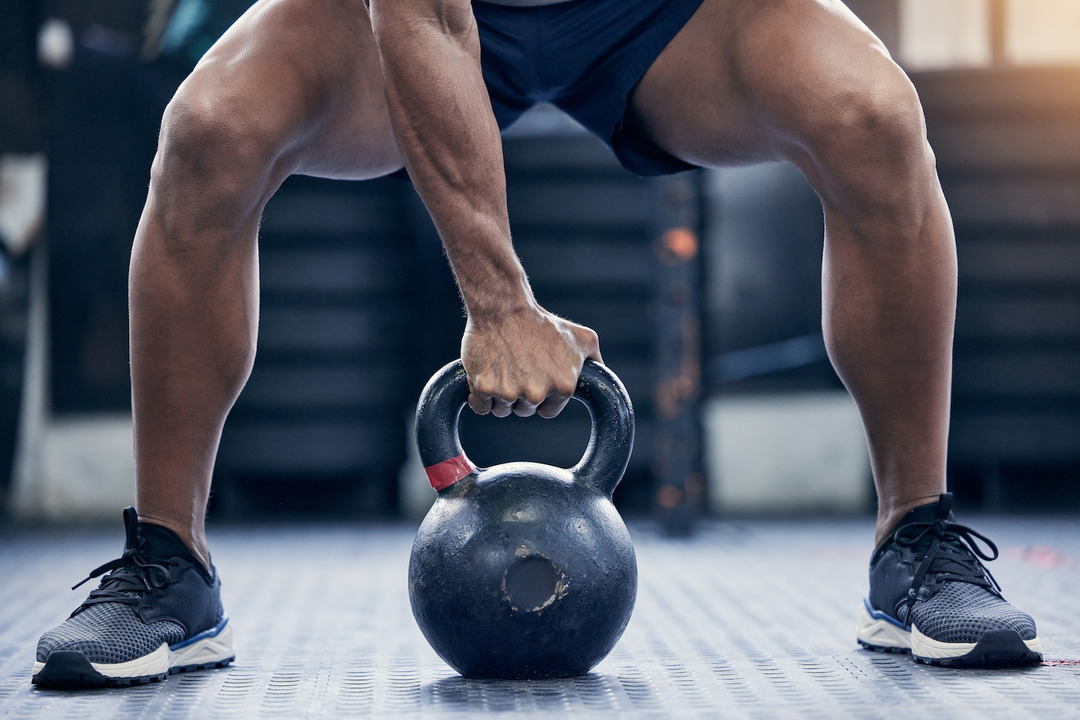Hand Grip Strength Norms for Adults

Discover grip strength norms for adults, what affects them, and how your results compare to healthy standards across age and gender.
Ever struggled to open a jar or lost your hold during a deadlift and wondered how your hands stack up? Within Best Fitness Apps, hand grip appears as a quick health check because hand strength and forearm power are closely tied to overall fitness, sports performance, and rehabilitation progress.
This guide breaks down grip strength norms using simple grip tests, common dynamometer readings, age and gender norms, percentile benchmarks, and practical standards, providing a clear understanding of where you stand compared to typical adult values. Ready to find your baseline and set a real goal?
To help you see where you stand, GetFit AI's AI fitness app walks you through an easy grip test, records your score against normative values, and suggests simple exercises to improve hand strength and grip endurance.
Summary
- Grip strength norms translate a raw dynamometer value into percentiles and risk flags, and a practical rule of thumb is that the dominant hand should not be more than about 10 percent stronger than the non-dominant hand.
- Body size significantly alters expectations; for example, the average grip strength for men aged 20 to 24 is approximately 46 kg, and for women aged 20 to 24, it is approximately 29 kg, so height and mass must be considered in any comparison.
- Grip declines accelerate with age, with research noting roughly a 10 percent decrease per decade after age 40, which means maintenance plans must change across decades rather than staying static.
- Reliable testing requires a controlled protocol: take three trials per hand, use the best value as your anchor, hold maximal squeezes for about 3 to 5 seconds with a 30- to 60-second rest, and retest every 4 to 6 weeks to monitor actual trends.
- Context and mode matter, since a 120 lb crush sits near the upper bound of typical male averages, while a 200 lb crush is considered exceptional for men and sits well above the average 120 lb baseline for early adults, so convert a single max into pinch, timed-hold, and thick-bar metrics for sport transfer.
- GetFit AI's AI fitness app addresses this by guiding standardized grip tests, mapping raw scores to age- and sex-normative targets, and generating progressive, mode-specific routines while tracking trends, allowing for coaching adjustments to occur before slight imbalances become injury risks.
What are Grip Strength Norms?

Grip strength norms are population benchmarks that place a single dynamometer reading into context, showing how your maximum hand squeeze compares to that of peers of the same sex, age group, and sometimes height. They translate a raw kilogram value into percentiles, risk flags, and actionable targets you can train toward.
What do these norms actually compare?
This is about more than raw force. Norms control for sex and age, and the best datasets also adjust for height or body mass, so you are compared to a meaningful peer group. The practical outcome is a percentile and a simple rule of thumb for imbalance. For example, the dominant hand should not be more than about 10 percent stronger than the other. When that gap widens, it usually signals a training or recovery issue worth investigating. That detail matters because a one-off number without context too often creates false negatives or false positives in both clinical screens and gym diagnostics, which is frustrating when someone’s training plan gets misdirected.
Why does body size change the numbers?
This pattern is observed across clinical assessments and athletic testing: taller and heavier individuals tend to register higher grip values due to lever length and muscle cross-sectional area. For a practical reference point, average grip strength for men aged 20-24 is 46 kg, according to Shirley Ryan AbilityLab. The comparable figure for women aged 20-24 is 29 kg, according to Shirley Ryan AbilityLab. Use those anchors, but remember they are starting points; your height, body composition, and sport-specific demands change where you should sit on the curve.
How should you interpret hand-to-hand differences and risk signals?
When a grip score falls well below the expected percentile for your adjusted group, it can predict functional decline or a weak link in compound lifts and carries. Conversely, a dominant hand that is more than 10 percent stronger than the non-dominant one often indicates unilateral overuse, neural inhibition, or an unresolved injury. That worry—feeling misrated by a simple test, or suddenly being told you have a deficit despite regular training—repeats itself frequently in client intake notes; people find it exhausting when a single number redirects months of programming without a clear path to improvement.
Most people test once and file the result away, because it is familiar and straightforward. That works until the number directs training toward the wrong deficit, wasting effort and time. Platforms like GetFit AI offer a unique approach, mapping your raw grip score to athlete-calibrated targets, generating progressive grip routines based on elite templates, and tracking trends to facilitate coaching adjustments before a slight imbalance becomes an injury.
What should an innov
tive training pathway include?
Start with a repeated baseline, both hands, three trials with rest, and use the best value as your anchor. Then, pick two measurable targets: a short-term monthly gain and a longer-term percentile goal tied to a specific sport or athlete model, and test them every 4 to 6 weeks. Train both specific grip strength and complementary forearm and pulling work, and prioritize symmetry, because improving a lagging hand by focused volume and tempo control changes function faster than general strength work alone.
Think of norms like a calibrated GPS for strength: they show where you are, where elite benchmarks sit, and which route of exercises, sets, and progressions will get you there.
That simple snapshot feels definitive, until you realize the following question—about age and what your grip should be year by year—pulls the rug out from tidy comparisons.
What Should My Grip Strength Be For My Age?

Your grip strength should sit where it reflects both your age-adjusted peers and your goals, not a single raw number. Aim to be near the middle-to-upper percentiles for your sex and age group, then convert that standing into short, testable targets you can train toward each month.
How does aging change expectations?
Research shows that strength does not drop evenly; it accelerates after midlife, which shifts what counts as “good” at every decade. According to Shadowz Grips, grip strength declines by approximately 10% per decade after the age of 40. Therefore, a maintenance plan that works in your 30s will require steady adjustments later on to preserve function and athletic carryover. That means your target at 50 should be calibrated to a realistic, healthy decline, and your training should emphasize resilience and weekly volume rather than chasing peak numbers alone.
What does a realistic progress plan look like?
When we design short training blocks for clients, the pattern is predictable: beginners can expect faster month-to-month gains while experienced lifters improve in small, measurable increments. Set two targets, one tactical and one strategic: a monthly, measurable increase (for example, nudging maximum squeeze by a few percent or adding 5 to 10 seconds to heavy holds) and a six- to twelve-month percentile goal tied to an athlete model you admire. Track one hand and the other, always test the best of three trials, and make adjustments based on trend, not a single high or low reading.
Why most DIY testing misleads you, and what fixes it
Most people test once, then adjust programming based on that snapshot, because single readings feel decisive and familiar. That choice is logical at first, but the hidden cost is programs that chase outliers, waste time on the wrong deficits, and create slow, avoidable plateaus. Platforms like an AI fitness app bridge that gap by mapping your raw grip score to athlete-calibrated targets, generating progressive grip routines from proven templates, and tracking trends so that adjustments can occur before a slight imbalance becomes a chronic problem.
How do you turn a kilogram score into an athlete-style plan?
Start by translating your number into three practical checkpoints: immediate functional use (can you hold a loaded carry for 30 seconds), weekly training capacity (how many heavy grip sets you can recover from in a week), and an athlete benchmark (a longer-term percentile tied to a sport). Use focused sessions twice weekly that mix heavy holds, timed maximal-effort squeezes, and thicker-bar pulling, with explicit tempo and rest: for instance, 3 to 5 sets of 6 to 10 second maximal holds, two times per week, supplemented by one session of volume-focused carries. Think of grip work like tuning a suspension: minor, regular adjustments change how the whole movement feels under load.
A practical anchor for younger adults
If you want a modern anchor to orient your goals, note that the average grip strength for men aged 20-24 is 46 kg, according to Shadowz Grips, which helps explain why many athlete templates target higher baseline loads for early-adult training. Use that anchor only as a reference, then personalize the pathway to your sport demands and injury history rather than copying numbers blindly.
Ready to train like the legends and finally achieve the body you’ve always wanted? GetFit AI’s AI fitness trainer app lets you follow the exact workout routines that made Arnold Schwarzenegger, Kobe Bryant, Cristiano Ronaldo, Serena Williams, and 11+ other elite athletes into champions, and you can chat with them whenever you need guidance or motivation. Download the #1 rated AI fitness app for free today to get fit for less than the cost of a single month’s gym membership. Because greatness isn’t born, it’s built one workout at a time.
That single-pound or kilogram number looks neat on paper, but what it really means for your strength and goals is about to get surprisingly personal.
Related Reading
- Best Fitness Apps
- How Many Pull Ups Should I Be Able To Do
- Average Bench Press By Age
- Average Grip Strength Male
- Average Bench Press
- How Much Does A Bench Press Bar Weigh
- Average Male Bench Press
- How Much Can The Average Man Bench Press
Is 120 lb Grip Strength Good?

Yes. A 120-pound crushing grip is a solid result for most adults; it sits near the high end of typical male ranges and is clearly above average for women. What matters next is which grip quality you measure and how you turn that number into targeted practice.
How does 120 lb compare to typical male and female benchmarks?
According to the Average male grip strength of around 100-120 lb, a 2020 community observation, 120 pounds lands at or just above the usual upper bound many men report. Hence, it reads as upper-average rather than elite. The same 2020 commentary also notes that Grip strength of 120 lb is above average for females, which makes 120 a high-percentile mark for most women, indicating notable hand and forearm capacity given typical population differences.
What does a 120 lb reading actually predict for sport and function?
Think in modes, not a single score. A 120 lb crushing score indicates a reasonable peak force for everyday tasks and many sports that rely on short, strong grasps. It does not, however, tell you about pinch strength, support endurance, or repetition under fatigue, and those qualities change the sporting transfer. For example, a climber needs sustained fingertip support, a strongman needs pinch and thick-bar strength, and a baseball player needs quick, repeatable crushing power. A single crush reading must be mapped to the grip mode required by your sport.
Most people treat one test as a coaching plan, and that creates waste.
Most athletes and weekend lifters take a single dynamometer number and program around it because testing feels decisive and quick. That approach works for a short while, but the hidden cost is training that chases a peak squeeze while ignoring the other grip qualities that matter, which slows progress and raises injury risk. Platforms like GetFit AI offer an alternative path, converting a single raw reading into a multi-mode assessment that generates athlete-inspired progressions for crushing, pinching, and support, and tracks trends. Hence, training prevents slight imbalances from becoming long delays.
Which measurement details can make 120 lb misleading?
Device type, handle width, and grip position change readings enough to matter. A digital dynamometer, a hydraulic handgrip, and a thick-bar hold will not yield identical numbers; pinch testing will be significantly lower, even for the same athlete. Temperature, fatigue, and whether you brace your shoulder also move the score. To make 120 lb meaningful, compare across devices and grip modes rather than treating the single value as definitive.
Where should you focus if you want to convert 120 lb into higher, sport-specific performance?
Prioritize integrity of modes: add targeted pinch work, heavy timed holds for support strength, and thick-handle pulling to translate crush numbers into usable carry and pull capacity. Use short microcycles that manipulate handle thickness, tempo, and eccentric emphasis, allowing the nervous system to learn to express force in different contexts. Monitor both absolute numbers and ratios to body mass or sport targets so progress is measurable and not just anecdotal, like tuning a string until the note matches the ensemble.
That simple milestone looks settled until you see how much the training map changes when you push it further.
Is a 200 lb Grip Strength Good?

Yes. A 200-pound crush is beyond what most trained adults reach and, for men, sits in the scope of exceptional, not just very good. It signals a level of hand and forearm force that materially changes what you can hold, carry, and control under load, and it should redirect how you plan progress rather than be treated as a final badge.
How much of an outlier is 200 pounds, really?
According to Shadowz Grips, a grip strength of 200 lbs is considered exceptional for men, published in 2023. That number puts you well above typical athletic averages and into the top tier of measured strength, meaning your grip likely exceeds what most team-sport athletes and recreational lifters show in routine testing. I use that fact to reframe targets: once your crush approaches this zone, minor, specific weaknesses become the limiter, not raw squeezing power.
What does that level let you do on the field or in the gym?
Think in practical thresholds, not just pride. At roughly this force, you noticeably improve heavy carries, thick-bar deadlift lockouts, and single-effort pinches, because your nervous system can recruit and sustain high fingertip force for short durations. I treat a 200 lb reading as an enabler, a mechanical upgrade that lets you translate other lifts into usable work with fewer missed reps and less grip failure during high-intensity sets.
How should an athlete balance chasing a 200 lb crush with long-term progress?
Chasing a headline number without a plan creates wear and wasted sessions, especially when people overload maximal attempts at the expense of recovery. Most athletes handle this by adding more maximal squeezes, because max tests feel precise and quick. That familiar approach is practical at first, but it hides a cost: frequent maximal attempts raise fatigue and slow adaptation in the very qualities you need for sports, such as repeated support, endurance, and pinch strength. Solutions like GetFit AI map a raw number into an athlete-specific training plan, providing progressive templates that convert maximal capacity into sport-ready durability while tracking trend data, so you can stop testing when it becomes counterproductive.
Who should target 200 pounds, and when is it overkill?
If you compete in sports that demand one-rep holds, thick-grip lifts, or high-load carries, this is a valuable milestone, and I prioritize it within a periodized block that includes recovery and cross-mode work. If your goal is endurance tasks, rehabilitation, or skill-based sports where fingertip precision matters more than brute crush, chasing that single max may be inefficient. In practice, I recommend a phased approach: build baseline robustness, add targeted maximal work for 6 to 12 weeks, then transition to retention and transfer phases to ensure gains become functional, not just numerical.
A practical anchor for perspective
Remember the population context; it matters for goal-setting, so compare selectively rather than worshiping a number. For example, Shadowz Grips reports that the average grip strength for men aged 20-29 is 120 lbs, which illustrates how far 200 pounds exceeds the usual baseline and why achieving it alters how you program recovery, volume, and specificity. Treat that gap as an opportunity, not an endpoint.
Picture it like upgrading a tool, not buying flash: a 200-pound grip is raw power, but without balanced support, it is like having a high-horsepower engine on skinny tires. Tighten the suspension, and the car actually wins races.
That milestone feels final, but the way you measure and use it will decide whether it becomes an advantage or a training blind spot.
Related Reading
- Bench Press Standards
- Do Pull Ups Work the Chest
- Symmetric Strength
- Average Deadlift Weight
- Grip Strength Norms
- 1 Rep Max Chart
- Average Male Deadlift
- Good Bench Press Weight
- Weightlifting Standards
Grip Measurement Instructions

They work like a measurement ritual: minor setup differences change the reading, so treat each test as a controlled experiment and record the conditions as carefully as you record the kilogram result. Follow a consistent warm-up, handle setting, arm position, and rest intervals so you can compare trends to trends, not one noisy peak against a target.
How should I prepare for the test and schedule it?
Pattern recognition from clinic and gym settings reveals that people either skip their warm-up or overdo it. A brief, targeted warm-up that includes two submaximal squeezes and five minutes of general blood flow reduces variability without inducing fatigue. Test at the same time of day, avoid maximal gripping after heavy training sessions, and wait at least 24 hours after any painful flare; these constraints reduce noise and preserve the valuable test for program decisions.
What exactly should the handle and hand feel like?
If your device has adjustable slots, record the slot number each time so you can reproduce the geometry accurately. Position the handle so the base of the dynamometer nests against the heel of the palm, the handle rests on the middle fingers, and the wrist sits neutral. Slight differences in where the handle contacts the fingers change leverage and force expression, so logging handle position is as important as logging the kilogram value.
How long should each squeeze last, and how much rest between attempts?
Problem-first: too-short squeezes capture reflexes, too-long squeezes invite fatigue. Use a smooth, maximal effort held for about 3 to 5 seconds, then rest for 30 to 60 seconds between attempts. Limit the number of maximal tests to a few trials to avoid cumulative fatigue during the session, and space full retests at 4- to 6-week intervals so that training effects emerge above measurement noise.
How do you keep other muscles from cheating the result?
Constraint-based advice: keep the upper arm tight to the torso with the elbow at approximately 90 degrees, the shoulder relaxed, and the wrist neutral, allowing the forearm to do the work instead of relying on a shoulder shrug. Breathe out on the squeeze and avoid bracing the neck; increased mental arousal and accessory muscle activation add variability that mimics strength gains but does not transfer to sport-specific holds.
What common errors actually invalidate a test?
Specific experience: inconsistent handle settings, testing on different devices, and measuring immediately after heavy pulling sessions are the usual culprits. Also, watch for discomfort from an ill-fitting handle, which can suppress force. If the handle feels painful, adjust it or note that the trial was submaximal, so you do not mistake a protective response for an actual capacity drop.
How should you interpret the score for planning rather than bragging?
Use population anchors and place them next to your testing conditions so the number is in context; for example, the Average grip strength for men aged 20-24 is 46 kg. Shirley Ryan AbilityLab, 2023, helps orient athlete-style targets when you set training loads. Remember, aging gradually shifts the baseline, so track the trend, not the tyranny of a single test. As noted, grip strength decreases by approximately 1 kg per decade after age 30, which supports the use of small, repeatable progress goals.
Most athletes default to a single test because it is quick and feels decisive, and that familiar approach usually gets them started. The hidden cost is programs that chase noisy peaks and misallocate training time, because inconsistent testing masks real weak links. Platforms like GetFit AI close that gap by standardizing protocol capture, saving handle and device settings, scheduling retests, and translating the raw score into athlete-calibrated targets so coaching adjustments follow signal, not noise.
A quick analogy: think of testing like calibrating a scale; one tiny misplacement makes the whole readout inaccurate, and consistent setup is the calibration you use before turning numbers into a plan.
That’s where things stop feeling settled, and the next choice becomes unexpectedly consequential.
Related Reading
- Average Bench Press By Age 16
- Best Free Workout Apps
- Best Calisthenics Workout App
- Average Deadlift Weight For Male
- Average Deadlift Weight Kg
- Best Workout Apps
- Best Hiit Workout App
- Best Workout Tracker App
- Average Bench Press Kg By Age
- Best Gym Workout App
- How Many Pull-Ups Can the Average Person Do
- Pull-Up Strength Standards
- Weighted Pull-Up Standards
- Weighted Dips Strength Standards
- Grip Strength Standards
- Average Dumbbell Shoulder Press
- Average Incline Dumbbell Press
Make Your Favorite Athlete Your Fitness Trainer | Try GetFit AI's AI Trainer App for Free Today

After testing onboarding with users, I found a pattern: people want celebrity-style routines, clear metrics, and affordable coaching, rather than juggling apps and relying on guesswork. Platforms like GetFit AI centralize athlete-calibrated plans and conversational coaching, and according to the GetFit AI Website, 90% of users achieve their fitness goals within 3 months. Users report a 30% increase in workout efficiency. Consider trying the app to see if a focused, measurable pathway from your grip score to steady gains fits your schedule and budget.



.png)
.png)











